#Socio-economic impact on mental health
Explore tagged Tumblr posts
Text
India Urged to Broaden Suicide Prevention Beyond Mental Health
On World Suicide Prevention Day, experts call for a broader approach to suicide prevention in India, focusing on socio-economic and community-based factors.
#Suicide prevention measures#Mental health awareness in India#World Suicide Prevention Day 2024#Socio-economic impact on mental health
0 notes
Text
COVID-19 Pandemic: Unraveling the Global Learning Crisis
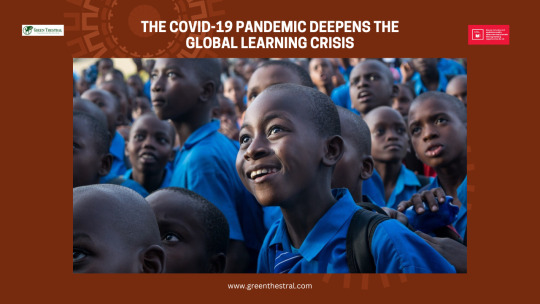
The COVID-19 pandemic has left an indelible mark on the world, disrupting economies, healthcare systems, and everyday life. One of the most significant areas affected by this unprecedented global crisis is education. With schools closing their doors to prevent the spread of the virus, the world has witnessed the deepening of a global learning crisis. The pandemic's impact on education has been profound, exacerbating existing inequalities and creating new challenges for learners, educators, and policymakers worldwide. In this article, we will delve into the ways the COVID-19 pandemic has intensified the global learning crisis and explore potential strategies to address these pressing issues.
The Disruption of Education During the Pandemic
When the World Health Organization (WHO) declared COVID-19 a pandemic in early 2020, governments worldwide swiftly implemented strict measures to curb the virus's spread. One of the most crucial measures was the closure of educational institutions. Overnight, classrooms turned into virtual learning environments, and educators had to adapt rapidly to online teaching methods.
While some countries were better equipped to transition to online education, others faced significant challenges due to a lack of infrastructure and access to technology. The digital divide became more pronounced as students from low-income families or remote regions struggled to keep up with their studies. As a result, millions of children and young adults were left without access to education, further exacerbating the global learning crisis.
Widening Educational Inequalities
The pandemic has widened existing educational inequalities worldwide. Students from privileged backgrounds with access to reliable internet connections, laptops, and private tutors were better equipped to continue their education remotely. On the other hand, students from marginalized communities often lacked the necessary resources to participate in online learning effectively.
Furthermore, learners with disabilities faced additional barriers, as many online platforms were not designed to accommodate their specific needs. This disparity in access to quality education has the potential to have far-reaching consequences, as it perpetuates social and economic inequalities for generations to come.
Learning Loss and the Educational Gap
Extended school closures and disrupted learning routines have resulted in significant learning loss for many students. Studies have shown that prolonged absences from the traditional classroom setting can lead to a decline in academic performance and cognitive development.
Moreover, the pandemic has created an educational gap between different age groups. Early childhood education, a critical developmental phase, has been severely impacted, potentially affecting children's long-term cognitive and social-emotional development. Similarly, older students faced the stress of delayed examinations, college admissions, and uncertainty about their future prospects.
Mental Health Impact on Students and Educators
The pandemic's toll on mental health has been considerable, impacting both students and educators. The abrupt shift to remote learning and the uncertainties surrounding the pandemic have caused stress, anxiety, and feelings of isolation among students. Many have struggled to cope with the challenges of online learning and the absence of social interactions with peers.
Educators, too, have faced unprecedented pressures, adapting to new teaching methods, dealing with technological challenges, and juggling personal responsibilities amidst the pandemic. The resulting burnout and fatigue among teachers have affected the overall quality of education and student support.
Solutions to Mitigate the Global Learning Crisis
While the COVID-19 pandemic has undoubtedly exacerbated the global learning crisis, there are several strategies that policymakers, educators, and communities can adopt to address these challenges and build a more resilient education system:
1. Bridging the Digital Divide
Governments and educational institutions must prioritize bridging the digital divide to ensure all students have equal access to quality education. This can be achieved through initiatives that provide laptops, tablets, or internet connectivity to students from disadvantaged backgrounds. Additionally, investing in the development of educational content optimized for low-tech devices can increase accessibility for students with limited resources.
2. Blended Learning Approaches
Blended learning, a combination of online and in-person instruction, can offer a flexible and inclusive approach to education. This approach allows for personalized learning experiences while maintaining the benefits of face-to-face interactions with teachers and peers. By incorporating digital tools and resources into the curriculum, educators can cater to diverse learning styles and individual needs.
3. Teacher Training and Professional Development
Empowering teachers with the necessary skills and tools to adapt to changing circumstances is crucial. Comprehensive training in online teaching methodologies and the use of technology in education can enhance the quality of remote learning. Moreover, providing ongoing professional development opportunities can help teachers stay motivated and engaged, ultimately benefiting their students' learning outcomes.
4. Prioritizing Early Childhood Education
Recognizing the significance of early childhood education, governments should prioritize resources for early learning programs. Investing in early childhood education can have a profound impact on children's cognitive and social development, setting them on a path to success in later years.
5. Strengthening Support Systems
To address the mental health challenges faced by students and educators, it is essential to establish robust support systems within educational institutions. Counseling services, peer support groups, and mental health awareness programs can create a nurturing and empathetic learning environment.
Conclusion
The COVID-19 pandemic has indeed deepened a global learning crisis, affecting millions of learners around the world. The disruption of education, widening educational inequalities, learning loss, and the mental health impact on students and educators have posed significant challenges to the education sector.
However, by implementing innovative strategies such as bridging the digital divide, adopting blended learning approaches, prioritizing teacher training, investing in early childhood education, and strengthening support systems, we can begin to mitigate the adverse effects of the pandemic on education.
As we navigate the path to recovery, it is vital for governments, educators, parents, and communities to come together and work collaboratively towards building a more resilient and inclusive education system that can withstand future challenges. Only through collective efforts can we ensure that every child has access to a quality education, regardless of the circumstances they may face. Let us seize this opportunity to reshape education for a brighter and more equitable future.
What's In It For Me? (WIIFM)
In this blog article on the COVID-19 pandemic's impact on education, you will gain a comprehensive understanding of how the global learning crisis has deepened in the wake of this unprecedented health crisis. Discover the challenges faced by students, educators, and policymakers, and explore effective strategies to address these issues. Learn about the widening educational inequalities, learning loss, and the mental health impact on learners and teachers. Moreover, find practical solutions and actionable steps to contribute to building a more resilient and inclusive education system for a brighter future.
Call to Action (CTA)
Join us in addressing the global learning crisis deepened by the COVID-19 pandemic. Share this article with your friends, family, and colleagues to spread awareness about the challenges faced by learners and educators worldwide. Engage in discussions about the importance of equitable access to quality education and the need for innovative solutions. Support initiatives that bridge the digital divide, prioritize early childhood education, and promote teacher training and professional development. Together, let's work towards building a stronger and more sustainable education system that can withstand future challenges.
Blog Excerpt
The COVID-19 pandemic has had a profound impact on education globally, deepening a pre-existing learning crisis. With schools closing their doors to curb the virus's spread, millions of students were left without access to education, exacerbating existing educational inequalities. This blog article delves into the far-reaching consequences of the pandemic on learners, educators, and communities. Discover how the sudden shift to remote learning widened the educational gap and led to learning loss among students. Uncover the mental health challenges faced by learners and teachers during these uncertain times. But, more importantly, explore actionable solutions to mitigate the global learning crisis and build a more resilient and inclusive education system.
Meta Description (320 characters)
Discover how the COVID-19 pandemic has deepened the global learning crisis. Explore its impact on education, widening inequalities, learning loss, and mental health challenges. Learn actionable strategies to address these issues and build a more resilient education system. Join us in shaping a brighter future.
#COVID-19 pandemic and education crisis#Impact of COVID-19 on global education#Challenges in remote learning during pandemic#Educational inequalities deepened by COVID-19#Learning loss due to school closures#Mental health impact on students and teachers#Solutions for the global learning crisis#Bridging the digital divide in education#Blended learning during COVID-19#Teacher training for online education#Early childhood education importance#Coping with remote learning challenges#Supporting students' mental health#Inclusive education post-pandemic#Rethinking education post-COVID-19#Resilient education systems for the future#Equity in online learning resources#Adapting curriculum for remote education#Parental involvement in virtual learning#Online education and socio-economic disparities#Government policies for education post-pandemic#Building community support for learners#Impact of the pandemic on higher education#Addressing the digital divide in rural areas#The role of technology in pandemic education#Redefining the role of educators during COVID-19#Promoting student engagement in virtual classrooms#Innovations in teaching methods post-pandemic#Fostering creativity and critical thinking in online education#Collaborative learning in a virtual environment
0 notes
Text

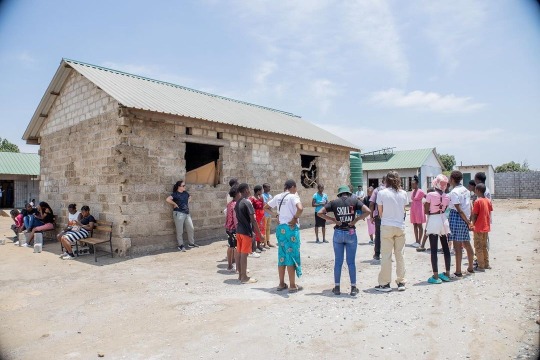
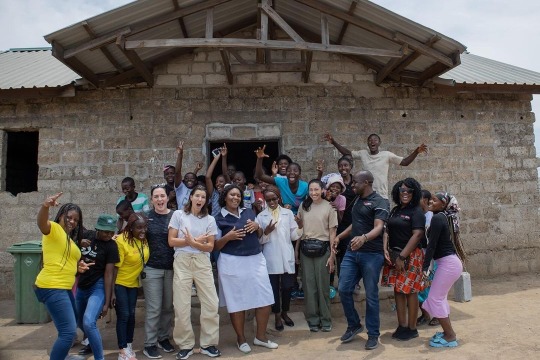


christenpress I made a commitment to travel to Africa to visit Grassroot soccer programs every 4 years because I hope that my presence and words can remind the coaches and participants that their work matters. And that people from across the globe are invested in the betterment of their lives, wellbeing, and health. And at the same time, these experiences give me a precious gift in the form of perspective: how the most important forces of life: joy, kindness, love are not bound by socio-economic status or achievement. They are your birth right, and often are felt while moving your body in sport or in dance, celebrating someone else, and in a sense of community belonging. Nobody understands that better than the beautiful people we got to spend the last 3 days with in Zambia.
Day 1- our first intervention was at a health facility in Lusaka. The program provides mental health resources for adolescents ages 10-18 living with HIV. Through play based learning and discussion, our coach helped us work through how to deal with increasing pressures to participate in risky behaviors.

christenpress Our second intervention was truly something special to witness. GRS is helping coaches get trained as Community Based Distributors that provide family planning services to their neighbors in need. With stigma around contraceptives and being sexually active, adolescents might be more comfortable going to someone they trust for these resources and tools. We saw a CBD open her home to young people from her community to provide them contraception. Not only does this increase use and ease of access, but also we witnessed how proud and impactful it can be to be a leader within the community working toward a better future.



christenpress For our last day and final intervention, ~40 GRS coaches from Lusaka came together to spend time with Tobin and me. We learned about the incredible work coaches are doing and participated in 4 different programs …and countless songs and dances. The GRS coaches are a big part of the magic of this organization. Change happens when you give young people (coaches are 18-24) from within these very communities the opportunity, resources and tools they need to uplift their communities themselves. They bring such joy, pride, and energy to each of the lessons- as they work toward a better future for themselves and their participants.
199 notes
·
View notes
Text
Also preserved in our archive
Lockdowns didn't cause learning losses. Public health keeps kids healthy and learning. Learning losses didn't start until the "back to normal" phase of the pandemic when kids were getting sick repeatedly and actually missing instruction.
By Emily McPherson
Australian students were academically resilient in the face of long periods of remote learning during the pandemic, new research suggests.
A study from UNSW Business School and the University of Sydney has examined NAPLAN test scores across Australian states.
The research looked at differences in student performance based on different periods of remote learning between 2020 and 2021, with school closures ranging from 9 to 157 days.
"Using NAPLAN test scores, we found that students in schools which operated remotely for an extended period performed similarly to students in schools which were closed for a relatively short period," Dr Nalini Prasad from UNSW Business School, said.
The researchers examined the results of over a million students across different age groups and locations.
NAPLAN test scores from 2013-2019 were used as baseline data, and compared to results from 2021 and 2022.
The study suggests Australia's strict COVID-19 policies, including extended lockdowns, may have played a role in mitigating the negative impact on education.
"Per capita COVID case numbers and deaths were considerably lower in Australia. Low COVID case numbers meant that students did not have to miss school due to contracting the virus," Prasad said.
The research looked at students from all socioeconomic brackets, and the results suggested most were academically stable, even those from disadvantaged backgrounds.
"There was little variation in NAPLAN performance for students from most socio-economic backgrounds," Prasad said.
"However, the data suggested some differences for Indigenous students and those from non-English speaking backgrounds, though this evidence was less conclusive," she said.
These findings could open up critical conversations about education funding priorities, she said.
"Post COVID, NSW implemented a program that aimed to help students catch up academically on lost schooling. The program was found to have had little effect on student performance," Prasad said.
"Directing resources toward longstanding inequities, rather than assumed learning losses, may yield better educational outcomes for all students."
While the research looked at academic performance, it did not examine other impacts of school closures, including mental health and student wellbeing, Prasad said.
"It's possible the pandemic had a broader impact on children's wellbeing, including their mental health and social development," she said.
"The Murdoch Children's Institute found a deterioration in the mental wellbeing of Australian children during the pandemic. This has also been found in other countries."
Study Link: www.sciencedirect.com/science/article/pii/S0272775724000712?via%3Dihub
#mask up#covid#pandemic#public health#wear a mask#covid 19#wear a respirator#still coviding#coronavirus#sars cov 2
32 notes
·
View notes
Text
Tata Institute of Social Sciences: A Hub for Social Change and Academic Excellence
The Tata Institute of Social Sciences (TISS) is one of India's most renowned institutions dedicated to higher education and research in social sciences. Established in 1936, TISS has evolved into a premier academic institution offering programs in a wide array of disciplines like social work, public policy, health, and education. Its legacy of contributing to social development and policy-making has earned it a reputation as a critical player in shaping India's social landscape.

Historical Background
The Tata Institute of Social Sciences was founded as the Sir Dorabji Tata Graduate School of Social Work. It was Asia's first school of social work, highlighting the foresight of its founders, who envisioned the need for well-trained social workers to address the pressing social issues of that time. Over the years, it grew into a multidisciplinary university, officially recognized as a Deemed University in 1964.
Mission and Vision
TISS’s mission is to create a humane and just society through education, research, and outreach. It aims to develop professionals who can address complex social, political, and economic issues with innovative solutions. The institute’s programs are designed to focus on human rights, social justice, and sustainable development.
Academic Programs and Courses
TISS offers a wide range of programs at undergraduate, postgraduate, and doctoral levels. Some of the key areas of study include:
Social Work: TISS is well-known for its Master’s program in Social Work (MSW), which prepares students to engage in community-based development work, social welfare, and advocacy.
Public Health: The institute offers programs that focus on health policy, health systems, and public health administration.
Human Resource Management: TISS is a sought-after institute for its postgraduate program in Human Resource Management and Labor Relations, recognized as one of the best in India.
Development Studies: This program addresses issues related to development policy, rural development, and urban studies, offering critical perspectives on national and global socio-economic challenges.
Education: The institute also has a strong presence in the education sector, providing degrees in education and teacher training programs aimed at transforming India's educational landscape.
Research and Impact
Research is one of the cornerstones of the Tata Institute of Social Sciences. The institute conducts cutting-edge research in areas like gender studies, poverty alleviation, mental health, disaster management, and governance. Its findings often influence national policies and contribute to positive social change.
TISS collaborates with government agencies, non-governmental organizations (NGOs), and international institutions to implement its research on the ground. The research centers at TISS include:
Centre for Social and Organizational Leadership (C SOL)
Centre for Study of Social Exclusion and Inclusive Policies (CSSEIP)
Centre for Human Rights
Each center focuses on a specialized area of social research, enabling TISS to contribute to a wide range of social and developmental issues.
Campuses and Facilities
The Tata Institute of Social Sciences has several campuses across India, with the main campus located in Mumbai. Other campuses are in Tuljapur (Maharashtra), Hyderabad (Telangana), and Guwahati (Assam). Each campus offers unique academic programs tailored to the socio-economic context of the region. The Mumbai campus, in particular, is known for its vibrant student life, state-of-the-art research facilities, and commitment to community engagement.
Admissions and Eligibility
The Tata Institute of Social Sciences conducts its own entrance exam known as TISS-NET for admission into various postgraduate programs. The eligibility criteria vary based on the program, but a bachelor's degree from a recognized institution is a minimum requirement. TISS-NET tests candidates on general awareness, English proficiency, and logical reasoning.
Notable Alumni and Contributions
TISS alumni have made significant contributions to various sectors, including public policy, social work, academia, and the corporate world. Many TISS graduates are working in leadership roles in NGOs, government bodies, international organizations, and corporate social responsibility (CSR) initiatives.
Conclusion
The Tata Institute of Social Sciences stands at the forefront of social science education and research in India. Its commitment to social justice, equity, and sustainable development makes it a unique institution. Through its academic programs, research initiatives, and community outreach, TISS continues to play a crucial role in addressing the most pressing social challenges of our time.
#Tata Institute of Social Sciences#TISS#TISS Mumbai#education#educationnews#universities#colleges#admissions#mba#higher education
3 notes
·
View notes
Text
youtube
"THE WALK BACK (Sandifer Imaging)" by vyle., featuring Xhosa, presents an intricate and poignant exploration of life on Chicago's South Side, an area marked by profound socio-economic challenges and a rich cultural tapestry.
The track employs vivid storytelling and dense lyrical content to reflect on the day-to-day realities and broader systemic issues faced by its residents. The song’s narrative opens with imagery that captures the harsh environment of the South Side. Lines such as "And we thru the gang way like they jet ski’s too, over mattresses at addresses that’s destitute" invoke a visceral sense of navigating through physical and metaphorical obstacles, highlighting both the resilience and the dire conditions of these neighborhoods.
Central to the track is the reference to Robert "Yummy" Sandifer, a tragic figure whose story encapsulates the plight of youth caught in the cycle of violence. Sandifer, a child gang member whose life ended prematurely, serves as a haunting symbol within the community. The lyric "when Sandifer images silhouetted us" underscores the enduring impact of his story on Chicago's youth, casting a long shadow over their lives and aspirations.
The song also delves into the experience of living in Hyde Park, a neighborhood known for its diversity and historical significance. vyle. juxtaposes elements of luxury and dilapidation, as seen in "epicurean tiled tenement corridor hallway, looking luxuriant," reflecting the complex socio-economic tapestry of the area.
Mental health emerges as a critical theme, with repeated references to PTSD. The line "we deserve them espy's too we from Chicago, we got PTSD too" poignantly articulates the psychological toll of living in such an environment, advocating for recognition and empathy towards these often-overlooked struggles.
The collaboration with Xhosa enriches the track, bringing additional depth and perspective to vyle.’s narrative.
Xhosa, known for her emotive voice and powerful songwriting, has a history of addressing themes of identity, resilience, and social justice in her music. Her previous works have been critically acclaimed for their lyrical depth and innovative soundscapes.
Together, they create a compelling piece that is not just a song but a vivid commentary on urban life, resilience, and the enduring spirit of the South Side community.
"THE WALK BACK (Sandifer Imaging)" stands as a profound statement on the lived experiences of Chicago’s South Side residents, blending academic rigor with artistic expression to offer a deeply engaging and thought-provoking listening experience.
#vyle#chicago rap#creative coding#threejs#3d art#interactive art#experimental music#soul music#Youtube
2 notes
·
View notes
Text
The Magic of Street-Side Trees. Beauty, Coolness, and Urban Prosperity.
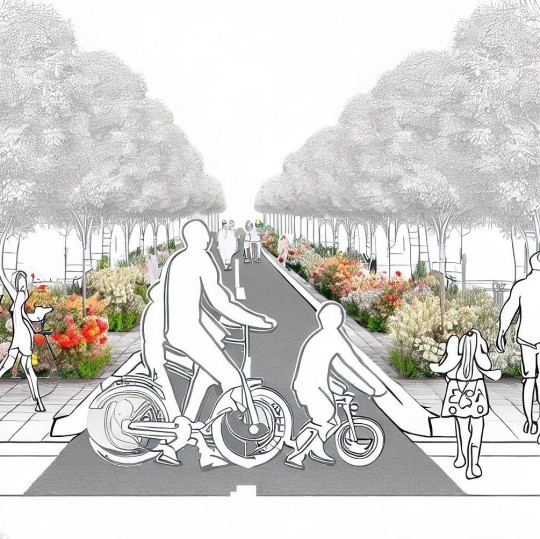
The beauty, coolness, and urban prosperity brought by street-side trees.
Trees lining urban streets are integral elements of the urban landscape, serving multiple ecological roles and socio-economic functions. In general, incorporating trees along the roads in urban areas can elevate the aesthetic appeal, regulate temperatures, and foster prosperity growth. And if our goal is to enhance the role of cities in driving economic growth and fully utilizing human resources, then we must prioritize making tangible improvements to urban environments.

Trees are crucial components for creating appealing and hospitable urban environments that enhance citizens' psychological and social well-being. They play a vital role in reducing air temperature and humidity, which helps alleviate the effects of heat waves and global warming. Trees bear witness to the history, culture, and identity of cities, which they preserve and pass on to future generations. In addition to their undeniable beauty, trees are valuable allies in the fight against climate change.
They provide a range of local benefits that are often ignored beyond the global role of absorbing carbon dioxide. This article aims to increase awareness among readers about the importance of trees for cities and the planet. It seeks to motivate all of us to value, preserve, and protect the urban tree heritage through a participatory and accountable manner that involves citizens and institutions.

Street-side trees are more than just beautiful to look at. They are an essential resource for cities, providing numerous benefits to residents' health, well-being, and quality of life. In their article on Monocolo, Paolo Massi and Giulia Papaleo highlight the main advantages of trees in urban areas. La magia degli alberi lungo le strade. Bellezza, frescura e prosperità urbana

Among the benefits that trees bring to the urban environment, we can mention:
Trees perform ecological, social, and economic functions that contribute to the well-being and development of cities. They help to reduce air pollution by capturing particles, filtering harmful gases, and producing oxygen. Trees also absorb carbon from the atmosphere and store it in their wood, making them beneficial for climate change mitigation. Additionally, trees create shade, cool the air, and reduce energy consumption for cooling buildings. They prevent flooding, improve water quality, and increase biodiversity by providing shelter and food for many species. Trees enhance the urban landscape, mitigate noise, and even increase the value of properties.

Moreover, they promote physical and mental health by stimulating physical activity, reducing stress, and improving mood and concentration.
Therefore, roadside trees are a valuable resource for cities and their inhabitants. It is critical to protect, care for, and increase them through various means, such as public policies, private actions, and guaranteed maintenance over time, recognizing their fundamental role in the quality of urban life so that maintenance, which develops jobs, in particular, is 'guaranteed' over time,

Urban forestation and eco-neighborhoods.
Urban forestation refers to designing and creating green spaces in urban and peri-urban areas to incorporate nature into the landscape. It is important to both develop new green spaces and enhance existing ones.
Eco-neighborhoods serve as an example of sustainable and livable urban environments. They are designed considering the environment and the health of their residents. Sustainability principles are followed to improve the landscape and economic assets of the urban context. The design of an environmentally sustainable neighborhood aims to reduce its environmental impact during construction, throughout its life cycle, and even during decommissioning while prioritizing the comfort of its residents. These neighborhoods are built to improve people's quality of life by emphasizing energy conservation, renewable energy, environmentally friendly materials, reducing water and waste consumption, and promoting sustainable mobility. They are tangible parts of the city that contribute to the well-being of its inhabitants.
In addition, urban forestation is another example of how urban environments can be made more livable and sustainable. We can seamlessly blend nature into the urban landscape by integrating street trees, gardens, and parks. They represent elements of nature that help purify the air we breathe, capturing pollutants, storing carbon, and mitigating the climate of cities.
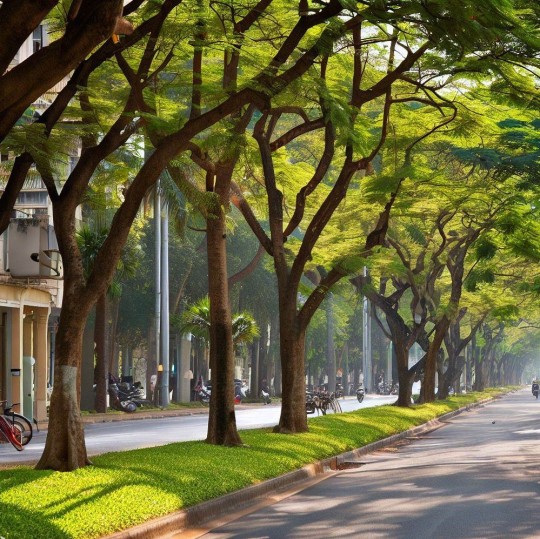
In summary, street-side trees are not just a decorative element but a proper green infrastructure that improves the quality of urban life. Therefore, It is vital to encourage planting, caring for, and preserving trees in urban areas, with the participation of government institutions, businesses, and residents, in order to achieve a shared vision to promote sustainable progress.
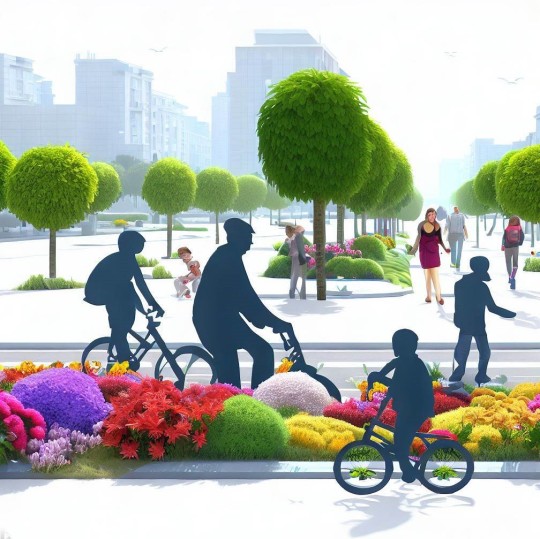
🟠 Italiano
Intro
Gli alberi sono elementi essenziali per creare paesaggi urbani attraenti e accoglienti, che favoriscono il benessere psicologico e sociale dei cittadini. contribuiscono a ridurre la temperatura e l'umidità dell'aria, mitigando gli effetti delle ondate di calore e del riscaldamento globale. Essi sono testimoni della storia, della cultura e dell'identità delle città, che conservano e trasmettono alle generazioni future. Alleati nella lotta ai cambiamenti climatici, oltre alla loro innegabile bellezza offrono una serie di benefici locali che spesso tendiamo a trascurare (al di là dei benefici globali di assorbimento dell’anidride carbonica). Questo articolo quindi ha lo scopo di sensibilizzare i lettori sull'importanza degli alberi per le città e per il pianeta, invitandoli a conoscere, apprezzare e tutelare il patrimonio arboreo urbano coinvolgendo i cittadini e le istituzioni in un processo partecipativo e responsabile.

La magia degli alberi lungo le strade. Bellezza, frescura e prosperità urbana.
Gli alberi sono una risorsa preziosa per le città, non solo per il loro contributo alla mitigazione dei cambiamenti climatici, ma anche per i molteplici benefici che apportano alla salute, al benessere e alla qualità della vita dei cittadini. In questo articolo del Monocolo gli autori Paolo Massi e Giulia Papaleo, vogliono illustrare alcuni dei principali vantaggi che gli alberi offrono alle aree urbane e alle persone che le abitano. La magia degli alberi lungo le strade. Bellezza, frescura e prosperità urbana
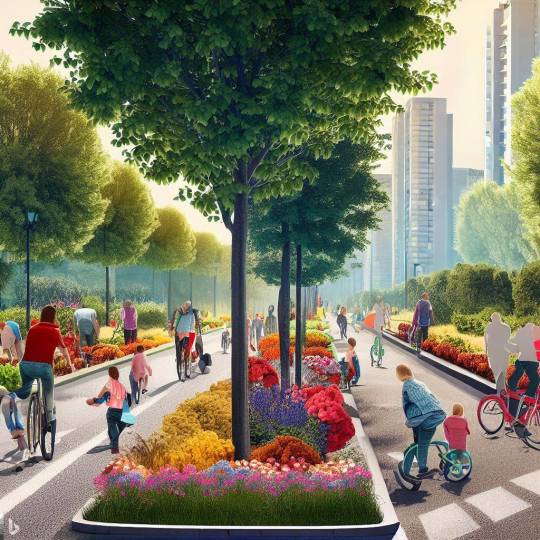
La magia degli alberi lungo le strade dunque non si limita alla loro estetica. Gli alberi sono elementi essenziali per il benessere e lo sviluppo delle città, in quanto svolgono funzioni ecologiche, sociali ed economiche. Tra i vantaggi che gli alberi apportano all'ambiente urbano, possiamo citare:
Riduzione dell'inquinamento atmosferico: gli alberi catturano le particelle sospese nell'aria, filtrano i gas nocivi e producono ossigeno.
Mitigazione del cambiamento climatico: gli alberi assorbono il carbonio dall'atmosfera e lo immagazzinano nel loro legno, contribuendo a ridurre l'effetto serra.
Regolazione termica: gli alberi creano ombra e rinfrescano l'aria attraverso la traspirazione, diminuendo la temperatura e il consumo energetico per il raffreddamento degli edifici.
Conservazione del suolo e dell'acqua: gli alberi riducono l'erosione del suolo, aumentano la sua capacità di infiltrazione e ritardano il deflusso delle acque piovane, prevenendo le inondazioni e migliorando la qualità dell'acqua.
Incremento della biodiversità: gli alberi offrono rifugio e cibo a molte specie animali e vegetali, arricchendo la diversità biologica delle città.
Valorizzazione del paesaggio urbano: gli alberi creano scenari naturali, armonizzano l'architettura, attenuano il rumore e aumentano il valore immobiliare delle proprietà.
Promozione della salute e del benessere umano: gli alberi favoriscono la salute fisica e mentale delle persone, stimolando l'attività fisica, riducendo lo stress, migliorando l'umore e la concentrazione.

Gli alberi e le aiuole a verde lungo le strade sono quindi una risorsa preziosa per le città e i loro abitanti. Per questo motivo, è importante proteggerli, curarli e incrementarli, attraverso politiche pubbliche e azioni private che ne riconoscano il ruolo fondamentale per la qualità della vita urbana affinché la manutenzione, che sviluppa posti di lavoro, in particolare venga 'garantita' nel tempo.

La forestazione urbana e gli ecoquartieri
Con il termine forestazione urbana si intende la progettazione e lo sviluppo di aree verdi urbane e periurbane, facendo della natura un'importante protagonista di questo paesaggio. Chiaramente è importante non solo progettare e sviluppare nuove aree verdi, ma anche rivalorizzare e riappropriarsi di quelle esistenti.
Certo! Gli ecoquartieri sono un esempio di ambienti urbani sostenibili e vivibili. Sono quartieri costruiti nel rispetto dell’equilibrio ambientale e della salute delle persone che vi abitano. Sono conformi ai principi della sostenibilità e puntano alla valorizzazione del patrimonio paesaggistico ed economico del contesto urbano in cui sono inseriti. La progettazione di un quartiere ecosostenibile punta a ridurne l’impatto ambientale: dalla fase di costruzione, al ciclo di vita, fino alla sua dismissione, senza mai dimenticare il comfort di chi lo vive. Si tratta di vere e proprie porzioni di città edificate con l’obiettivo di innalzare il livello di qualità della vita e sono realizzate ponendo l’accento su: risparmio energetico; uso delle energie rinnovabili e di materiale ecologico; riduzione del consumo di acqua e di rifiuti; promozione della mobilità sostenibile.
Inoltre, la forestazione urbana è un altro esempio di come gli ambienti urbani possono essere resi più vivibili e sostenibili. Le alberature stradali, i giardini e i parchi urbani rappresentano degli elementi di natura che contribuiscono a purificare l’aria che respiriamo, catturando sostanze inquinanti, immagazzinando carbonio e mitigando il clima delle città.
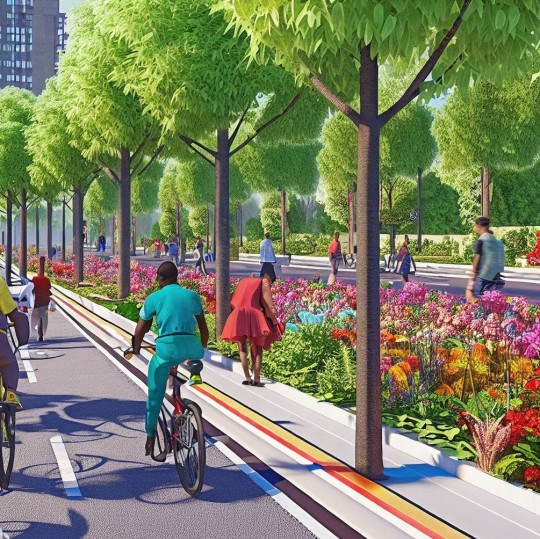
Come si può notare, gli alberi lungo le strade non sono solo un elemento decorativo, ma una vera e propria infrastruttura verde che migliora la qualità della vita urbana. Per questo motivo, è importante promuovere la piantumazione, la manutenzione e la protezione degli alberi nelle città, coinvolgendo le amministrazioni pubbliche, le imprese e i cittadini in una visione condivisa di sviluppo sostenibile.
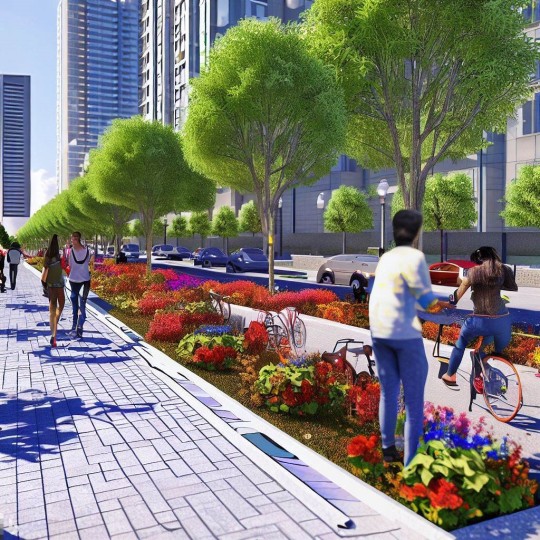
images created by The Board Behind © 2023
More related topics on this matter you might like:
Landscape Architecture: self-reflection on improving and enhancing our cities' run-down suburbs. English /Italian
Give color to the city to celebrate the joy of living.
I appreciate your kind presence and attention on this matter. Thank you for joining us today.
⏩ The Board Behind
#the board behind#sviluppo sostenibile#urban environments#urban tree heritage#ecological restoration#social growth#economic growth#city development#well being#urban living#urban life#heat wave#heat islands#sustainable progress#social innovation
15 notes
·
View notes
Text
family problems in Australia

Family problems in Australia, like in many parts of the world, are multifaceted and arise from a variety of socio-economic, cultural, and psychological factors. Understanding these issues is crucial for addressing them effectively. In Australia, family problems are influenced by the country's unique social fabric, economic conditions, and cultural diversity.
One of the most significant contributors to family problems in Australia is economic stress. The rising cost of living, housing affordability issues, and job insecurity place immense pressure on families. According to a report by the Australian Bureau of Statistics, many households struggle with debt, which exacerbates stress and conflict within families. Financial instability can lead to arguments between partners, affecting their relationship and the overall family dynamic. Additionally, the stress of managing limited resources can negatively impact parenting, as parents might be preoccupied with financial worries rather than focusing on their children’s emotional needs.
Mental health problems are another major concern affecting families in Australia. The prevalence of mental health disorders, including depression, anxiety, and substance abuse, has been increasing. These issues not only affect the individuals suffering from them but also have a profound impact on their family members. For instance, a parent dealing with depression might struggle to provide the emotional support their children need, leading to feelings of neglect and emotional distress in the children. Furthermore, mental health issues can strain marital relationships, often leading to separation or divorce.
Domestic violence is a critical issue facing Australian families. It cuts across all socio-economic, cultural, and demographic boundaries. According to a report by the Australian Institute of Health and Welfare, one in six women and one in sixteen men have experienced physical or sexual violence from a current or former partner. Domestic violence not only causes immediate physical and emotional harm but also has long-term effects on the mental health and well-being of victims, including children who witness such violence. The trauma from domestic violence can lead to a cycle of abuse, perpetuating family problems across generations.
Australia’s rich cultural diversity presents both opportunities and challenges for family dynamics. Migrant families often face unique issues, such as cultural clashes between parents and children, who may adopt Australian cultural norms more quickly. This generational cultural gap can lead to misunderstandings and conflicts within families. Additionally, migrant families might experience isolation due to language barriers and a lack of extended family support, which can exacerbate feelings of loneliness and stress.
Parenting in the modern world presents numerous challenges, and Australian families are no exception. The increasing prevalence of technology and social media has introduced new dynamics into family life. Parents often struggle to manage their children’s screen time and internet use, leading to conflicts. Additionally, the influence of social media can affect children’s self-esteem and mental health, further complicating family relationships. Balancing work and family life is another significant challenge, with many parents finding it difficult to allocate sufficient time for their children amidst demanding work schedules.
Despite these challenges, there are numerous support systems in place to assist Australian families. Government initiatives, such as financial aid programs and mental health services, provide crucial support to families in need. Organizations like Relationships Australia offer counseling and mediation services to help families navigate conflicts. Community support networks also play a vital role in providing a sense of belonging and assistance to families, especially those from migrant backgrounds.
Family problems in Australia are complex and influenced by a range of factors, including economic stress, mental health issues, domestic violence, cultural diversity, and parenting challenges. Addressing these issues requires a multifaceted approach that includes economic support, mental health services, legal protection, and community integration programs. By understanding and tackling the root causes of family problems, Australia can foster healthier and more resilient families, which are the cornerstone of a strong and cohesive society.
2 notes
·
View notes
Text
Analyzing the Larger Significance of Muldrow v. City of St. Louis: Considering White Employees and Workplace Dynamics
Sergeant Jatonya Muldrow filed a lawsuit against her employer after being transferred from an intelligence position to an administrative one, arguing that the decision reflected discriminatory intent. She claimed that while there were no immediate financial or rank-related consequences following this move, it represented a major negative change in her professional life and career trajectory. The Supreme Court’s ruling in favor of Muldrow constitutes a reinterpretation of Title VII of the Civil Rights Act of 1964 which states that even without demotion or pay cut backs discrimination can still occur under traditional views where those acts manifest themselves; thereby extending its broader implications throughout various social, psychological, economic and political spheres.
Detailed Case Analysis
This case brings attention to how difficult workplace discrimination can be understood especially what qualifies as an adverse action. Before this judgement courts required employees seeking relief from employment discrimination claims to show that their working conditions had changed for the worse in some tangible way or there was “severe alteration” said Justice Kennedy writing on behalf of himself along with Justices O’Connor, Souter and Ginsburg. But the supreme court has now recognized that subtle alterations may also amount to unlawful treatment if they could hurt employee’s status quo negatively affects feelings about inclusion fairness equity among other things.
Psychological and Cultural Impacts
The ruling deals directly with mental health issues brought by perceived unfairness at work places; for instance had it been another person such as Muldrow might have felt demoted her sense worth affecting morale creating hostile environment thus leading us into understanding ‘hostile work environment’ more clearly than before through those softer forms shown above Even though these changes did not affect pay rate official status within company itself could still decrease self esteem regarding professionality which may have influenced growth perception due to any institution refusing equal treatment rights towards them because she is a woman of African American descent.
On another level, this decision could have widespread effects on corporate cultures. Organizations may have to become more self-aware and take active steps towards identifying and eliminating not only overt but also subtle forms of discrimination which might require them to be reevaluating how they assign roles or handle promotions so as ensure such processes are objective free from biasness while fostering inclusivity respect among all staff members regardless their race gender age etcetera.
Socio-Economic and Political Implications
In terms of economy, businesses will now need to invest heavily in training programs for their employees perhaps even beef up HR departments charged with ensuring compliance at workplace; this is aimed at creating an environment where every worker can realize his full potential thereby leading higher job satisfaction levels staff retention rates well being productivity growth.
Amongst other things, this ruling also affects white workers as well as the political setting of employment law. For white employees, this case reinforces the importance of comprehending DEI initiatives and working with them too; fair treatment helps in creating a just working environment for all people. Politically speaking, this verdict could have an impact on future legislative or judiciary steps concerning work and discrimination laws. It establishes a precedent that validates subtle forms of prejudice which can be experienced by anyone thereby opening doors to wider protection against various kinds of bias based not only on gender and race but also possibly other factors. The Supreme Court’s decision in Muldrow v City of St Louis redefines interpretation under Title VII Civil Rights Act thereby expanding what is considered as workplace discrimination. The judgement highlights that it is not necessary for bias to show up through explicit demotions or pay cuts but may include less noticeable yet significant changes in duties performed at work or status within the company due to discriminatory intentions.
To encourage deeper involvement with workplace diversity equity & inclusion programs among white staffs; this means they should take time reflecting over their own hidden biases while also considering structural inequalities present in organizations where they are employed. This can be achieved through offering more advanced trainings targeting reduction of unconscious prejudices among employees who are racially different from each other hence realizing those many subtle types which colleagues might face even without knowing about them thus fostering empathy within such places leading to better relations among members irrespective of rank held.
Additionally, the decision challenges existing norms within organisations by fostering a cultural shift towards fairness. When all members feel respected & valued because new standards were set after this ruling was made; there will likely be higher levels of collaboration between teams thus making them work closely together than before since every person’s ideas count equally now more so than ever before due to diverse backgrounds being recognized equally within these institutions post the court’s pronouncement regarding what constitutes unlawful differentiation grounded upon race and sex etcetera. What is more, it may also influence professional growth opportunities so that promotions are done based on merit and free from favouritism or discrimination against any particular group of people; this could result into creation of an environment where everyone’s abilities can be fully utilized thus optimizing work performance.
Even further, the decision sets forth a broad legal as well as ethical awareness which in turn underscores every employee’s duty to engage only with legally compliant & morally upright practices. This creates not only compliance-driven workplaces but also moral-intensive corporate cultures too; both being essential for sustained success within any organization regardless of its nature.
The supreme court has just made a decision that makes it easier for employees to sue their employers over discrimination. Before this ruling, people had to prove that something really bad happened as a result of their boss being biased against them — like getting paid less or demoted. Now if you can show even small changes in your work duties were because someone didn’t like who you are (and they have a reason), then that’s enough. This means lots more lawsuits will probably be filed claiming company X discriminated against staff member Y on basis Z when transferring them between jobs because now any complaint could count.
Effects on DEI Initiatives and Broader Societal Impacts
DEI initiatives within organizations may need to be reworked after the Supreme Court extended their interpretation of Title VII. Now all businesses are required not only avoid doing anything prejudiced but also make sure it doesn’t look that way too when moving employees around different roles. This might mean having longer courses or changing policies so everyone knows what is fair treatment under various circumstances.
For Caucasian workers and other groups affected by this judgement, it emphasizes the importance of workplaces where decisions about promotions etc happen fairly based on who deserves them most not race/sex etc factors . They should also consider how they implement diversity programs so as not create hidden biases which could be seen as unfair under new “lower” standard set by Title Seven less strictness.
Conclusion
This case sets new standards for job transfers under title seven of civil rights act 1964 effectively written by Muldrow v City Of St Louis law suit . By taking into account even slight alterations in duties performed at work place coupled with reasons which can be connected with such changes , court has lowered bar discrimination claims level hence giving more teeth to the protection offered under seventh chapter litigatorship. The broader effect therefore is that many employers will now find themselves facing increased numbers 0f complaints alleging employee X was moved from position Y because organization Z did not like A’s B.
The decision in Muldrow v. City of St Louis has far reaching implications not only for employment law but across multiple disciplines including psychology, sociology, and political science among others. In what could be described as a landmark ruling by the highest court of the land on matters related to Title VII discrimination cases arising from transfers workers make between jobs; this judgement expands our understanding about what actually constitutes acts or omissions amounting to unfair treatment at workplace which can easily fall within purview 0f anti-discrimination legislations such as those provided under civil rights act 1964 especially section seven thereof. It does so by emphasizing that besides looking at overt acts indicative of bias against an individual based on his or her protected characteristic/s one must also take into account covert actions indicative of animus towards same persons because such steps create equitable environment where everybody feels safe guarded against prejudice regardless their gender identity expression sexual orientation race color religion age national origin disability status etcetera.
The recent Supreme Court decision in Muldrow v. City Of St Louis represents a significant shift in the interpretation of Title VII of the Civil Rights Act of 1964, particularly concerning the standards required to prove discrimination in the context of job transfers. This analysis explores the judicial reasoning behind the decision, its implications for employment law, and its broader effects on society, including impacts on Diversity, Equity, and Inclusion (DEI) initiatives and specific demographic groups such as white employees.
Reference List
Supreme Court of the United States. (2024). Muldrow v. City of St. Louis, Missouri, et al. No. 22-193. Retrieved from https://www.supremecourt.gov/opinions/23pdf/22-193_q86b.pdf
Gibson Dunn & Crutcher LLP. (2024, April 17). Supreme Court Holds That A Title VII Plaintiff Challenging A Work Transfer Need Not Show “Significant” Harm. Retrieved from https://www.gibsondunn.com/supreme-court-holds-that-a-title-vii-plaintiff-challenging-a-work-transfer-need-not-show-significant-harm/

#MuldrowvStLouis#SupremeCourtDecision#TitleVII#GenderDiscrimination#LegalNews#CivilRights#USLaw#JusticeSystem#WorkplaceEquality#SCOTUS2024
2 notes
·
View notes
Text
covid and mental health
By Rachel Shannon
Everyone can relate to the fact that covid was a stressful period in our human existence. Some people struggled more than others but no hardship should be weighed or compared to one another's. It was both a tribulation and a learning experience. Before covid, we lived in a very rushed Society. The work day was 9-5 Monday through Friday, we never thought to challenge it. Now post covid, some people don't work on Mondays or have half a day on Fridays, or some people work completely remote which never used to be an option. We now take more time for our emotional health and embrace therapy which for decades previously was considered taboo. To get to this point, Society had to face some tough adversities which include mental health decline in Victoria Australia, harsh discriminatory challenges for Asian Americans, and radical transitions for college students. These three scenarios are just a few examples of some of the many ways in which covid impacted our mental health. These situations brought awareness to the way we view and treat mental health.
Since covid, intentional self-harm rates skyrocketed in Victoria Australia due to lack of employment opportunities and social isolation. While young people are less susceptible to covid, the pandemic did disproportionately affect their psychosocial development, as social connectedness and social identity are important factors in youth. Suicide attempt hospitalization rates ranged from 77.4 to 97.9 events per 100,000 population between 2012-2013 and 2019-2020. Rates were higher outside of urban areas. It is estimated that the self-harm hospitalization rates in Greater Melbourne was 75.9 per 100,000 population compared to 112.0 per 100,000 population in the rest of Victoria. The Victorian mental health system was extensively evaluated by the Royal Commission on the advice of the Victorian government. The Royal Commission found that the state's mental health system was unable to respond to the needs of the people suffering from mental illness or psychological distress, unsuitable to meet current and future demands, and an urgent need for reform.
“Pre-existing individual factors, such as poorer physical health, a history of chronic illness, or pre-existing mental health problems, have been associated with higher rates of anxiety and depression during COVID-19. Other individual factors may be important too, for example introverted individuals are somewhat less likely to have high quality social support systems compared to extraverts. Consistent evidence shows that adults experiencing pre-existing socio-economic disadvantages face increased mental health problems related to COVID-19.” (Westrupp,”et al.”2023)
While Westrupp explains that pre-existing conditions occurred in parents and children in Victoria before covid, these conditions were made worse from government restrictions and shutdowns.
Since covid, the Asian-American population have faced intense racial discrimination which include verbal harassment and physical assault. This is mainly due to media outlets blaming China for the pandemic. A recent Pew Research Center report found that approximately 31% of Asian American adults reported being the subject of slurs or jokes because of their race or ethnicity, and about 58% of Asian American adults shared that it is more common for people to express racist or racially insensitive views about Asians than it was before the covid-19 outbreak. The increase in racial discrimination against Asian Americans during the covid-19 pandemic has also contributed to covid-19 discrimination fear, which exacerbated mental health problems such as depression and anxiety.
“Anti-Asian racism has always been present in the US society for over 150 years, though it has been encoded in different vocabulary and language in different periods of time.”(Adachi,2022).
Adachi explains that the “Yellow Peril” which is described as western fears of Asians, especially Chinese, would invade their land and disrupt western values, started as far back as the 1870s. Although these fears already existed, there has been an uptick in racial discriminatory acts since covid due to media outlets and politicians.
Covid took a strain particularly on college students. College is already a stressful time for young adults then covid added the pressure of social distancing, working remotely and in extreme cases leaving their dorm and finding residence elsewhere. Many may argue that stress among college students is unrelated to covid and that it’s been an ongoing issue for some time. McLafferty writes that a survey was conducted of students who attended college in Northern Ireland in the fall of 2019, then again a year later found that high levels of mental health problems were already present among students commencing college. Although college students were already struggling before the pandemic, it’s important to understand that covid exacerbated pre-existing mental health conditions.
“Students assessed post pandemic reported significantly more symptoms of anxiety and depression than students assessed pre pandemic, and these two cohorts are reporting more symptoms in many areas than a cohort of students assessed 25 years earlier.”(Nails,2023).
In conclusion, the COVID-19 pandemic made the Victorian government aware of the urgent need for better mental health care for their people, brought to light the racial injustice of Asian-Americans, and showed the massive strain covid had on college students. These three situations highlight the severity in which covid affected our mental health. After the pandemic, it was realized that mental health care was at the bottom of the list of priorities. This awareness led to changes such as flexible working conditions and more need for therapy. Therapy also became more available remotely. Not only should we spread awareness on the issue of mental health but we should also take combative steps to help such as make therapy more affordable and hire more mental health providers. Unfortunately it took this catastrophic event to make us open our eyes. With this better awareness and understanding, we as a society can tackle mental health issues head on.
Vacher, C., Ho, N., Skinner, A., Robinson, J., Freebairn, L., Lee, G. Y., Iorfino, F., Prodan, A., Song, Y. J. C., Jo-An Occhipinti, & Hickie, I. B. (2022). Optimizing Strategies for Improving Mental Health in Victoria, Australia during the COVID-19 Era: A System Dynamics Modelling Study. International Journal of Environmental Research and Public Health, 19(11), 6470. https://doi.org/10.3390/ijerph19116470
Westrupp, Bennett, Berkowitz, Youssef, Toumbourou, Tucker, Andrews, Evans, Teague, Karantzas, Melvin, Olsson, Macdonald, Greenwood, Mikocka-Walus, Hutchinson, Fuller-Tyszkiewicz, Stokes, Olive, Wood, Feb2023, child, parent, and family mental health and functioning in Australia during COVID-19: comparison to pre-pandemic data
Huang, C. J., & Huang, C. Y. (2023, December 21). The Moderating Role of Emotion Regulation Strategies on Asian American Parents’ Discrimination Experiences and Mental Health During the COVID-19 Pandemic. American Journal of Orthopsychiatry. Advance online publication. https://dx.doi.org/10.1037/ort0000714
Adachi, Nobuko, 2022, Yellow Peril Redux: Vitalizing Pre-Existing Racial Conditions with a New Symbol
Nails, Julianna. “A Crisis in College Student Mental Health? Self-Ratings of Psychopathology Before and After the COVID-19 Pandemic.” American Psychological Association, American Psychological Association, 11 Nov. 2023, psycnet.apa.org/record/2023-78779-001
McLafferty, Ward, Walsh, O’Neill, Bjourson, McHugh, Brown, McBride, Brady, Murray, Nov 2023, College Student Mental Health and Wellbeing Prior to and during the COVID-19 Pandemic
2 notes
·
View notes
Text
On gender
Gender is a complex and multi-faceted concept that has been debated and discussed for centuries. It is an integral part of society, impacting the way people interact, and how they perceive themselves, their rights and possibilities. Gender roles are social constructs, developed over time, and are based on traditional, religious and cultural norms.
Gender roles are often passed down through generations, and are reinforced by media, social, educational, and recreational socialization. This can lead to gender stereotypes, which have a disproportionate negative impact on certain groups of women and girls, such as those of lower socio-economic status or those living in rural areas.
The last half century has seen a dramatic shift in gender equality, sometimes referred to as a “gender revolution”. Women’s employment opportunities have increased, and attitudes towards women’s capabilities and roles in society have changed significantly. However, there is still a great deal of work to be done to ensure that all individuals are given equal opportunities and rights regardless of their gender.
Gender also impacts the way people dress, communicate, and interact in everyday life. It influences the language we use and the way we perceive and relate to others. Gender-based stereotypes and norms can lead to discrimination and violence, and have a detrimental effect on people’s mental and physical health.
In order to promote gender equality, it is essential to start by raising awareness and understanding of gender issues. This can be accomplished through education, dialogue, and representation in media, literature, and other forms of art. It is also important to challenge gender-based stereotypes and to create an environment in which everyone is respected and treated equally regardless of their gender.
It is ultimately up to each individual to be aware of their own gender, and to recognize and respect the gender of others. Everyone has the right to choose their own identity and to live free from gender-based discrimination and violence.
2 notes
·
View notes
Text
The Role of Psychologists Like Dr. Karen Hawk in Arizona's Mental Health Landscape
In recent years, the importance of mental health has become a more central conversation in Arizona, as it has across the nation. As communities face increasing challenges like economic stress, natural disasters, and social isolation, the need for quality mental health care has never been greater. Psychologists like Dr. Karen Hawk are at the forefront of Arizona's mental health landscape, providing vital services to individuals, families, and communities. Dr. Hawk’s work highlights the crucial role psychologists play in mental health care—helping people navigate their emotional and psychological struggles, fostering resilience, and promoting overall well-being.
In this blog, we’ll explore how psychologists like Dr. Karen Hawk are shaping Arizona's mental health environment, their specific contributions, and the ways in which they support individuals and communities in times of need.
1. Providing Expert Psychological Support for Individuals
One of the primary roles of Dr Karen Hawk psychologist Arizona is to provide expert psychological support to individuals grappling with a wide range of mental health issues. Whether it’s anxiety, depression, trauma, grief, or stress, psychologists are trained to offer the evidence-based therapeutic interventions necessary to help people process and heal.
In Arizona, a diverse state with a growing population, mental health challenges are widespread. High rates of stress, depression, and anxiety have been linked to various factors, including economic hardships, natural disasters, and the fast-paced lifestyle in urban areas. Many individuals in Arizona are also dealing with the lingering effects of trauma, particularly in areas that have been impacted by wildfires or economic instability. As a licensed psychologist, Dr. Hawk specializes in trauma-informed care, which is a therapeutic approach that prioritizes safety, trust, and empowerment when treating clients who have experienced trauma.
Psychologists like Dr. Hawk utilize various therapeutic techniques, including Cognitive Behavioral Therapy (CBT), Dialectical Behavioral Therapy (DBT), EMDR (Eye Movement Desensitization and Reprocessing), and psychodynamic therapy to help individuals understand their emotions, improve coping strategies, and build healthier thought patterns. Dr. Hawk’s ability to tailor therapy to each person’s unique needs ensures that individuals in Arizona receive the best care possible, one that addresses the root causes of their issues, not just the symptoms.
Moreover, psychologists like Dr Karen Hawk psychologist do more than treat mental illness—they also support personal growth. They help clients build emotional resilience, self-awareness, and healthy coping mechanisms that lead to long-term well-being. In a state where the effects of climate, isolation, and socio-economic factors can be particularly pronounced, psychologists offer a critical resource for individuals who need help managing stress, uncertainty, and life transitions.
2. Promoting Mental Health Education and Awareness
In Arizona, as in many places across the U.S., there is still a significant stigma surrounding mental health care. Despite growing awareness, many individuals still hesitate to seek therapy due to fears of judgment or misunderstanding. Psychologists like Dr. Hawk play an essential role in promoting mental health education and dismantling these stigmas.
Through public speaking engagements, workshops, community outreach programs, and media appearances, Dr. Hawk works to normalize conversations about mental health. Her involvement in educating the public about mental health issues helps increase awareness about common conditions like anxiety and depression and encourages individuals to seek help before problems become overwhelming.
Dr Karen Hawk psychologist also works to raise awareness about the importance of mental health in overall well-being, which can sometimes be overshadowed by physical health. By addressing the emotional and psychological components of health, psychologists help communities understand that mental health is just as important as physical health and deserves equal attention and care.
Additionally, by providing psychoeducation in therapy sessions, Dr. Hawk empowers clients with knowledge about their mental health conditions. This knowledge helps clients gain a sense of control and agency over their treatment, allowing them to actively engage in their healing journey and improve their mental well-being.
3. Supporting Families and Relationships
Psychologists like Dr. Hawk also play a critical role in supporting families and relationships in Arizona. Family dynamics can often be strained by stressors like financial hardship, parenting challenges, grief, or relationship issues. In such situations, family therapy and couples counseling become invaluable tools for healing and restoring balance within the home.
Dr Karen Hawk psychologist works with families and couples to help them navigate conflicts, improve communication, and strengthen relationships. For instance, many families in Arizona are dealing with the fallout of economic stress or the emotional impacts of loss or trauma. Dr. Hawk’s systemic approach to family therapy recognizes that issues within the family unit often affect each individual in different ways. By working with the family as a whole, Dr. Hawk helps each member better understand each other’s perspectives, reduce misunderstandings, and develop healthier patterns of interaction.
In couples therapy, Dr. Hawk addresses the emotional challenges that arise in romantic relationships, helping partners to improve trust, resolve conflicts, and rekindle emotional connections. The stresses of daily life, financial concerns, and raising children can often put strain on relationships, but with the right support, couples can rebuild stronger foundations. Dr. Hawk’s therapeutic techniques allow couples to gain a deeper understanding of each other’s needs and communicate in a way that fosters intimacy and mutual respect.
Additionally, Dr. Hawk’s work with families provides an opportunity for parents to learn better strategies for managing behavior, coping with stress, and supporting each other. Given the challenges that many families in Arizona face, including financial instability and the demands of modern life, family therapy can make a profound difference in their overall quality of life.
4. Bridging Gaps in Mental Health Care
One of the most important contributions of psychologists like Dr. Hawk is their ability to bridge gaps in mental health care, especially in underserved or rural communities. Arizona is a large state with both urban hubs like Phoenix and Tucson and more remote areas where mental health services may be scarce. Many individuals in these areas face barriers to accessing care, including limited resources, financial constraints, and a shortage of mental health professionals.
Dr. Hawk’s ability to offer telehealth services has made therapy more accessible to people who may otherwise not have been able to receive treatment. Whether clients live in the outskirts of Maricopa County, the rural areas of Yuma, or the desert regions of Northern Arizona, Dr. Hawk ensures that her therapy services are available to individuals across the state. This is particularly important in Arizona, where the population is rapidly growing and the mental health needs are diverse.
Through her work with underserved populations, Dr. Hawk also tailors her therapeutic approach to address the unique challenges these communities face. For example, in rural areas, the experience of isolation and limited social support can exacerbate mental health conditions. In these cases, Dr. Hawk helps clients develop coping strategies that take into account the specific difficulties of living in a remote area, while also supporting them in building stronger social networks.
5. Crisis Intervention and Support
Psychologists like Dr. Hawk are often called upon to provide crisis intervention when individuals face acute emotional distress, including during times of natural disaster, financial crisis, or community trauma. Arizona, a state prone to wildfires, droughts, and other environmental challenges, frequently experiences traumatic events that can leave communities shaken. During such crises, Dr. Hawk offers support through individual therapy, group counseling, and community-based interventions.
Dr. Hawk’s experience in trauma-informed care means that she is well-equipped to address the emotional aftermath of such events. She helps individuals process the psychological impact of a crisis, normalize their reactions, and develop strategies to cope with the ongoing stress. By providing immediate support and guidance, psychologists like Dr. Hawk help communities recover emotionally and regain a sense of control in the wake of trauma.
6. Advocating for Mental Health Policy and Resources
Beyond her direct work with clients, Dr. Hawk is also a vocal advocate for improving mental health policy in Arizona. By working with local organizations, government bodies, and advocacy groups, she helps to raise awareness about the importance of increasing funding for mental health services, expanding access to care, and addressing disparities in treatment.
As a mental health professional, Dr. Hawk understands that systemic change is necessary to improve the mental health landscape in Arizona. By advocating for more resources, better access to care, and policies that promote mental health wellness, Dr. Hawk plays a vital role in making mental health services more available and equitable for all Arizonans.
Conclusion
Psychologists like Dr. Karen Hawk are critical pillars of Arizona’s mental health care system. From providing expert therapy for individuals dealing with a range of emotional and psychological struggles, to promoting awareness and education, to advocating for systemic changes, Dr. Hawk’s work helps improve the lives of countless people in Arizona. Whether through trauma recovery, family therapy, crisis intervention, or community outreach, psychologists like Dr. Hawk provide essential services that foster mental and emotional well-being across the state. In a rapidly evolving world, the role of psychologists is more important than ever, and their impact on Arizona’s mental health landscape is profound, far-reaching, and invaluable.
0 notes
Text
Best NGO in Prayagraj: A Beacon of Hope for the Community
Prayagraj, a city steeped in cultural and spiritual significance, is also home to a thriving community that often faces various socio-economic challenges. Among the city’s various organizations, one NGO stands out for its profound impact and unwavering commitment to improving the lives of people in need. This NGO has earned the title of the best NGO in Prayagraj, thanks to its holistic approach to social welfare, community empowerment, and sustainable development.

Mission and Vision of the NGO
The core mission of this NGO is to uplift the underprivileged and marginalized communities in Prayagraj through education, healthcare, women’s empowerment, and livelihood support. With a vision to create a more inclusive society, the NGO strives to bridge the gap between the underserved populations and the opportunities they deserve. It believes in the transformative power of education and works towards ensuring that every child, regardless of their background, has access to quality education and a chance to build a better future.
Key Areas of Work
Education for All: The NGO has established several educational programs that cater to children from economically disadvantaged families. Through free tuition, scholarship programs, and the establishment of learning centers, the NGO is breaking the barriers of illiteracy and ensuring that every child has access to knowledge. They focus on imparting not just academic skills but also life skills, preparing children for a brighter future. In addition, adult education programs are conducted to help young adults and seniors learn basic literacy and numeracy, thus empowering them to navigate the modern world.
Healthcare Initiatives: Healthcare is another area where the NGO has made a significant impact. They conduct regular health camps in remote areas of Prayagraj, providing free medical checkups, medicines, and awareness about preventive healthcare. Through partnerships with local hospitals and health experts, they offer services for maternal health, child nutrition, and the prevention of common diseases. The NGO also runs campaigns to raise awareness about hygiene, sanitation, and mental health, ensuring that people have access to basic health knowledge.
Women’s Empowerment: One of the most crucial aspects of the NGO’s work is its focus on women’s empowerment. By providing vocational training, entrepreneurship programs, and leadership development initiatives, the NGO is empowering women to become financially independent and contribute positively to society. They also conduct workshops on gender equality, rights, and legal awareness, helping women in Prayagraj break free from societal constraints and achieve their potential.
Livelihood Support: Addressing unemployment and poverty is at the heart of the NGO’s livelihood initiatives. The organization offers skill development training programs in various sectors, such as tailoring, computer education, and carpentry, to help individuals gain employable skills. Furthermore, they assist women and youth in starting their own businesses through microfinance support and mentoring, giving them the tools to create sustainable livelihoods for themselves and their families.
Environmental Awareness: In addition to social and economic development, the NGO also focuses on environmental sustainability. It runs tree plantation drives, promotes waste management practices, and educates the local population about the importance of conserving natural resources. These initiatives aim to create a greener and more sustainable Prayagraj for future generations. Our services in Best NGO in Prayagraj.
Conclusion
This NGO in Prayagraj has become a beacon of hope for countless individuals, transforming lives and communities through its dedication to social welfare and holistic development. By focusing on education, healthcare, women’s empowerment, and sustainable livelihoods, the NGO is making Prayagraj a better place for all its residents. Its collaborative approach, combined with transparency and a passionate commitment to social change, has established it as the best NGO in the city. Whether through volunteer work, donations, or partnerships, the NGO invites everyone to join their mission of creating lasting change in the community.
0 notes
Text
Mental Health Research
"Mental health is a state of mental well-being that enables people to cope with the stresses of life, realize their abilities, learn well and work well, and contribute to their community. It is an integral component of health and well-being that underpins our individual and collective abilities to make decisions, build relationships and shape the world we live in. Mental health is a basic human right. And it is crucial to personal, community and socio-economic development." - Mental health WHO
Mental health is defined as the state of a person's mental well-being. Unlike physical health, which is usually easier to manage and easier to detect changes in due to it being physical, Mental health can me more difficult to detect changes in and to manage. As our society develops, we are learning more ways to detect mental illness and find ways to manage it. Mental health and illness is just as real and impactful as any physical illness.
With Mental health, there are also mental health conditions. Some are developed, and some are from birth.
"Throughout our lives, multiple individual, social and structural determinants may combine to protect or undermine our mental health and shift our position on the mental health continuum.
Individual psychological and biological factors such as emotional skills, substance use and genetics can make people more vulnerable to mental health problems.
Exposure to unfavourable social, economic, geopolitical and environmental circumstances – including poverty, violence, inequality and environmental deprivation – also increases people’s risk of experiencing mental health conditions." - Mental health WHO
Mental health is a topic I personally am quite familiar with. I have suffered with social and generalized anxiety, as well as depression. These mental health conditions affect everyone differently, so my experience will be different to someone else's. This can also make it more difficult to understand mental health as it is unique to each person- there are general symptoms but they are experienced differently.
0 notes
Text
Mindfulness and Mental Health Initiatives in Schools: Programs that Create Impact

Mindfulness education involves putting exercises and mindful habits into students' daily school life. These practices aim to help students enhance their concentration and stay present. Activities such as controlled breathing, guided meditation sessions, and body scans are taught to encourage awareness. But why is it so important, and how is thebest school in Coimbatore making a difference by implementing such programs?
Enhancing students' mental health
According to the Global School-based Student Health Survey, about 50 per cent of Indian students experience mental stress. Mindfulness training has proven effective in improving self-control, reducing negative feelings, and promoting general well-being. By focusing on mindfulness, the best school in Coimbatore helps students learn various techniques to manage and reduce stress effectively.
Better classroom performance
There is substantial research evidence that mindfulness helps to improve students' academic performance. By engaging in mindfulness activities, students can better focus and retain information, leading to better grades. The best school in Coimbatoreunderstands the importance of a calm and focused mind for learning, which is why they incorporate mindfulness training into their curriculum.
Promoting healthy relationships
It is in our school years that we learn how to communicate and build relationships with others. By teaching mindfulness practices, thebest school in Coimbatore is helping students develop empathy and emotional intelligence. Mindfulness encourages students to be more aware of their own feelings and thoughts, which in turn helps them understand and connect better with others.
Overcoming difficult situations
Life can present us with many challenges, and the last thing that schools and educators should do is ignore the mental health aspect of students. Through mindfulness and mental health education, students are equipped with the skills to manage and overcome difficult situations effectively. By teaching them how to be present and non-judgmental, students can overcome challenges with a calmer and more positive mindset.
SSVM School of Excellence excels in providing a well-rounded education that not only focuses on academic success but also promotes the overall well-being of its students. By incorporating mindfulness into its curriculum, the school is empowering students with lifelong skills to navigate through life's challenges and become successful, well-adjusted individuals. Visit their website today at www.ssvmse.com to know more about their holistic approach to education.
About the Institution:
SSVM School of Excellence is recognised as the best CBSE School in Coimbatore. SSVM School of Excellence stands distinguished by high standards, vigorously pursuing them by nurturing enthusiasm for a holistic learning experience. Their environment has a unique blend of broad socio-economic and cultural mix that aids in students and teachers successfully achieving academic excellence that is fuelled by a strong, unwavering commitment.
0 notes
Text
Exploring the Role of Haitian Therapists in Mental Health: Bridging Culture and Healing
In recent years, the importance of mental health has gained recognition globally, but cultural factors often shape how individuals approach and perceive it. In Haiti and the Haitian diaspora, addressing mental health issues is uniquely complex, intertwined with cultural, historical, and socio-economic factors. Haitian therapist are pivotal in helping their communities confront these challenges while preserving cultural identity. This article explores how Haitian therapists are helping their communities overcome mental health stigmas, adapting therapeutic practices to meet culturally specific needs, and fostering resilience.
The Cultural Lens in Therapy
Haiti's culture is vibrant, deeply rooted in spirituality, community, and resilience. However, mental health has historically been a taboo subject. Many Haitians view psychological struggles through a cultural or spiritual lens rather than as medical concerns. This perception creates unique challenges for mental health professionals, as individuals may be reluctant to seek help or may interpret mental health differently from Western perspectives. Haitian therapists, therefore, integrate cultural understanding with therapeutic techniques, bridging the gap between clinical psychology and Haitian cultural beliefs.
Tackling Stigma
Mental health stigma is a significant barrier within Haitian communities, often preventing individuals from seeking support. Haitian therapists actively work to dismantle these barriers, using approaches that resonate culturally. Educating communities about mental health, facilitating open discussions, and dispelling myths are critical elements of their work. Many Haitian therapists leverage group settings, storytelling, and community gatherings to foster understanding and break down mental health misconceptions.
Adapting Therapeutic Approaches
Virtual Therapy often use approaches that differ from traditional Western methods. Recognizing the value of family and community, they integrate family dynamics and communal relationships into therapy. Therapists might use narrative therapy, encouraging clients to recount life stories, helping them view their experiences as part of a broader cultural narrative of resilience. By using culturally resonant symbols, language, and expressions, therapists build trust and encourage openness among their clients.
Trauma and Resilience
Many Haitians have faced adversity, from natural disasters to socio-political challenges. Trauma is prevalent, and it impacts not only individuals but entire communities. Haitian therapists often focus on resilience-building practices, addressing trauma while celebrating cultural strengths. These therapists use trauma-informed approaches that respect cultural boundaries, such as group therapy settings, spiritual engagement, and rituals that are familiar and comforting for Haitian individuals.
The Role of the Haitian Diaspora
In the Haitian diaspora, Haitian therapists play an essential role in helping individuals navigate their dual cultural identities. For many in the diaspora, cultural disconnect or isolation can amplify feelings of loneliness and alienation. Haitian therapists help clients balance their Haitian heritage with their experiences in new cultural settings. These therapists serve as a bridge, providing culturally attuned therapy that fosters a sense of belonging while addressing the unique mental health challenges faced by the diaspora.
Challenges Haitian Therapists Face
Haitian therapists often face limited resources, especially in Haiti, where mental health infrastructure is underfunded and understaffed. Additionally, therapists may experience challenges related to training and professional support. Despite these challenges, many Haitian therapists remain committed, often taking on community-centered roles that extend beyond traditional therapy. Their dedication to their communities and cultural heritage often leads them to become advocates and educators in their efforts to expand access to mental health services.
The Future of Mental Health in Haitian Communities
As awareness about mental health grows, Haitian therapists are increasingly recognized for their essential role. They bring cultural sensitivity, resilience-based methods, and a deep understanding of the Haitian experience to the field of mental health. Organizations, both local and international, are beginning to support Haitian therapists, which promises a brighter future for mental health care in Haitian communities. With continued efforts, Haitian therapists can further expand access to care, breaking down barriers and nurturing healthier communities.
0 notes